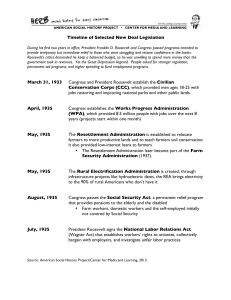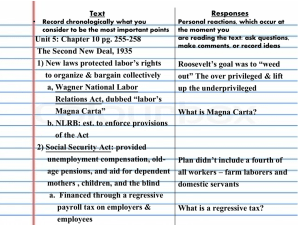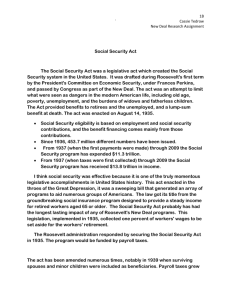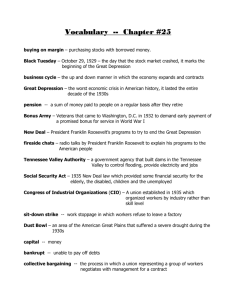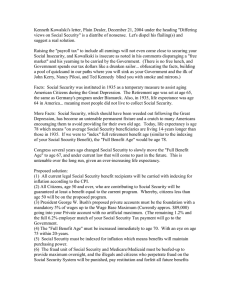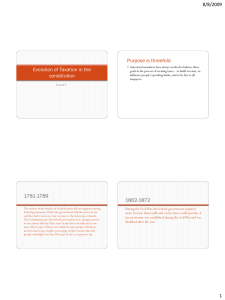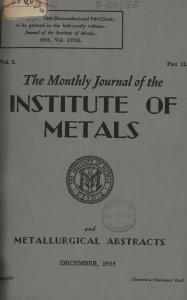The Second New Deal Relief, Recovery and Reform
advertisement
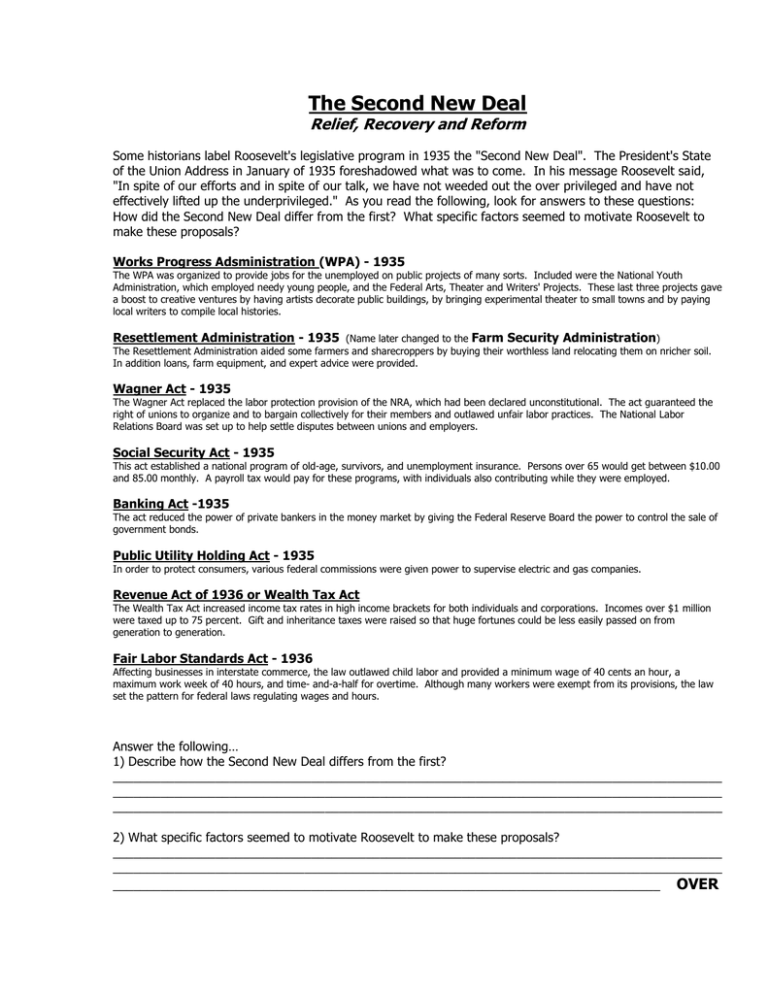
The Second New Deal Relief, Recovery and Reform Some historians label Roosevelt's legislative program in 1935 the "Second New Deal". The President's State of the Union Address in January of 1935 foreshadowed what was to come. In his message Roosevelt said, "In spite of our efforts and in spite of our talk, we have not weeded out the over privileged and have not effectively lifted up the underprivileged." As you read the following, look for answers to these questions: How did the Second New Deal differ from the first? What specific factors seemed to motivate Roosevelt to make these proposals? Works Progress Adsministration (WPA) - 1935 The WPA was organized to provide jobs for the unemployed on public projects of many sorts. Included were the National Youth Administration, which employed needy young people, and the Federal Arts, Theater and Writers' Projects. These last three projects gave a boost to creative ventures by having artists decorate public buildings, by bringing experimental theater to small towns and by paying local writers to compile local histories. Resettlement Administration - 1935 (Name later changed to the Farm Security Administration) The Resettlement Administration aided some farmers and sharecroppers by buying their worthless land relocating them on nricher soil. In addition loans, farm equipment, and expert advice were provided. Wagner Act - 1935 The Wagner Act replaced the labor protection provision of the NRA, which had been declared unconstitutional. The act guaranteed the right of unions to organize and to bargain collectively for their members and outlawed unfair labor practices. The National Labor Relations Board was set up to help settle disputes between unions and employers. Social Security Act - 1935 This act established a national program of old-age, survivors, and unemployment insurance. Persons over 65 would get between $10.00 and 85.00 monthly. A payroll tax would pay for these programs, with individuals also contributing while they were employed. Banking Act -1935 The act reduced the power of private bankers in the money market by giving the Federal Reserve Board the power to control the sale of government bonds. Public Utility Holding Act - 1935 In order to protect consumers, various federal commissions were given power to supervise electric and gas companies. Revenue Act of 1936 or Wealth Tax Act The Wealth Tax Act increased income tax rates in high income brackets for both individuals and corporations. Incomes over $1 million were taxed up to 75 percent. Gift and inheritance taxes were raised so that huge fortunes could be less easily passed on from generation to generation. Fair Labor Standards Act - 1936 Affecting businesses in interstate commerce, the law outlawed child labor and provided a minimum wage of 40 cents an hour, a maximum work week of 40 hours, and time- and-a-half for overtime. Although many workers were exempt from its provisions, the law set the pattern for federal laws regulating wages and hours. Answer the following… 1) Describe how the Second New Deal differs from the first? _________________________________________________________________________________________ _________________________________________________________________________________________ _________________________________________________________________________________________ 2) What specific factors seemed to motivate Roosevelt to make these proposals? _________________________________________________________________________________________ _________________________________________________________________________________________ ________________________________________________________________________________ OVER 3) Some people think that the New Deal laws can be organized under three headings: "Relief", "Recovery" and "Reform". Put each of the laws described in the two readings (First Hundred Days / Second New Deal) into one of these three categories. Write your answer beside the title of each act. 4) Were the laws described in the two readings aimed at coping with the depression, or were they attempting to change the nature of the American economic system? _________________________________________________________________________________________ _________________________________________________________________________________________ _________________________________________________________________________________________ _________________________________________________________________________________________

